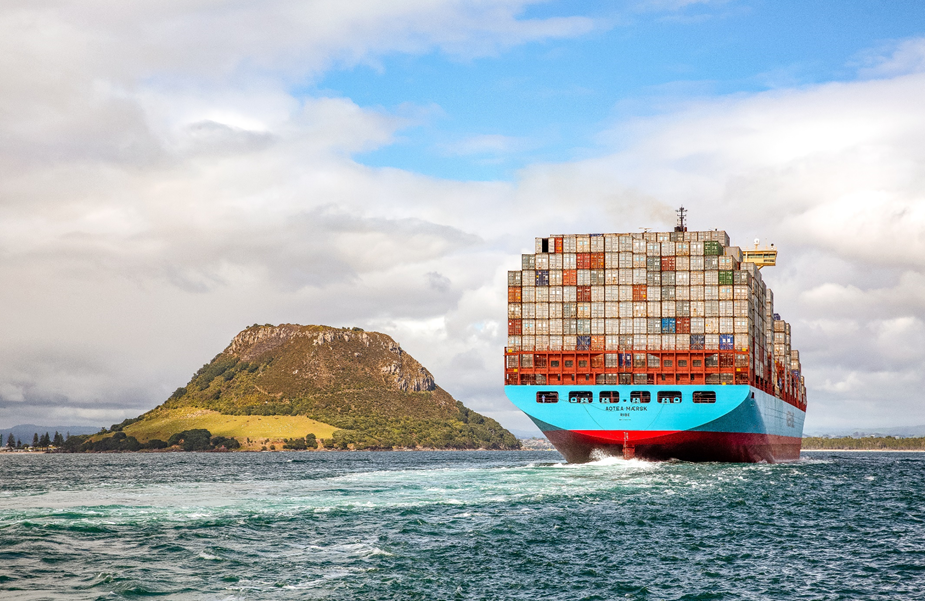After a strong initial recovery from the pandemic’s effects in 2021, New Zealand is likely to feel the impact of slowing global trade well into 2023, according to ASB’s latest Trade Disruption economic report.
The report looks at the impact of international and domestic forces on supply chain and global trade, and forecasts what lies ahead for businesses and consumers for the remainder of 2022 and beyond.
“Six months ago, shipping and manufacturing interruptions, paired with growing consumer demand, created the perfect storm for major supply chain disruption. Now factors such as rising inflation, labour shortages and Russia’s invasion of Ukraine are adding to the COVID melting pot, crippling global supply chain growth,” says ASB International Trade Consultant Paul Gestro.
“Global forecasts have been downgraded, and with New Zealand’s economy susceptible to international frictions, we can expect to see reduced demand for our exports coupled with shrinking demand for imported goods and lessened availability.”
Consumer price inflation is currently tracking at an annual rate of 7.3 percent, the highest in more than 30 years. Much of this rise is due to higher costs for imported consumer goods, having risen by 15 percent since late 2019 and this is expected to rise further.
Higher import prices are hitting businesses as well as consumers. Prices for imported intermediates (oil and other raw materials) are up close to 25 percent on pre-COVID levels and prices for imported capital goods, which have moved considerably to date, look likely to climb given the rising cost environment.
Export demand taking a hit
Businesses and consumers here and internationally, are facing increasing costs at a time when global growth is slowing. In 2021, the country’s key trading partners recorded 6.1 percent growth and this figure is expected to slow to just 3.5 percent in 2022 and 3.4 percent in 2023.
As the rising cost of living continues to bite consumers in New Zealand’s key export markets such as the United States, Europe and the United Kingdom, demand for the country’s high-end commodities has taken a hit.
New Zealand’s wine and seafood exports are suffering the most with some export volumes down almost a third on pre-COVID levels.
Meat and dairy exports remain the country’s strongest players although exports for both are down on previous years. Prices are holding for meat and dairy, but labour constraints and bad weather have impacted export volumes. For the year ending June, whole milk powder exports are down 23 percent on last year and beef exports are behind around three to eight percent.
Despite global forestry supply being hampered by the absence of Russian logs, New Zealand logging producers are facing turbulent times. Around 87 percent of the country’s forestry exports are sent to China where a cooling property market is curtailing demand.
“At a national level, exporters are being plagued by rising input costs and widespread labour shortages which are being exacerbated by the Omicron outbreak and constraining outputs, therefore it’s unlikely export volumes will make a return to their 2020 peak until 2024,” says Gestro.
“These dynamics are being felt more so by smaller exporters, like seafood and wine producers as they have less established trade networks and are less readily able to increase prices compared to larger commercial exporters.”
Import demand plunges as Kiwis cut discretionary spending
With New Zealanders tightening their belts as the cost of living soars, demand for imported goods is set to slow as Kiwis reduce discretionary spending.
ASB Senior Economist Mark Smith says the early onset of the pandemic significantly changed spending patterns. “With the borders closed and COVID restrictions set in, Kiwis while stuck at home splurged on imported consumer durables, including new cars. This spending is now tailing off as high inflation crimps household budgets.
“Higher costs, slowing demand and elevated uncertainty is impacting the business sector, with firms signaling they intend to cut back on investment, including imported capital equipment. This will weigh on economic activity this year and the cutbacks will not help in addressing widespread capacity constraints within the economy.”
Shipping disruptions continue to cause headaches
Shipping costs remain at historic highs but are beginning to cool somewhat, potentially bringing some reprieve. With some main ports congested and facing skilled labour shortages, reliability continues to be one of the biggest issues impacting businesses, having worsened since the height of the pandemic in 2021.
Smith says being unable to rely on timely deliveries of stock is putting a strain on business cash flow as it becomes harder to stagger supplies. “Despite falls of late, it is unlikely shipping costs will drop to pre-COVID levels.
“Smaller businesses could be more impacted as they’re less likely to have well established trade relationships and are more sensitive to geographical exposure.”
The ASB Trade Disruptions report is available online at: https://www.asb.co.nz/content/dam/asb/documents/reports/economic-note/ASB%20Trade%20Disruptions%20Report%20Aug%202022.pdf
Other recent ASB reports covering a range of commentary can be accessed at our ASB Economic Insights page: https://www.asb.co.nz/documents/economic-insights.html




